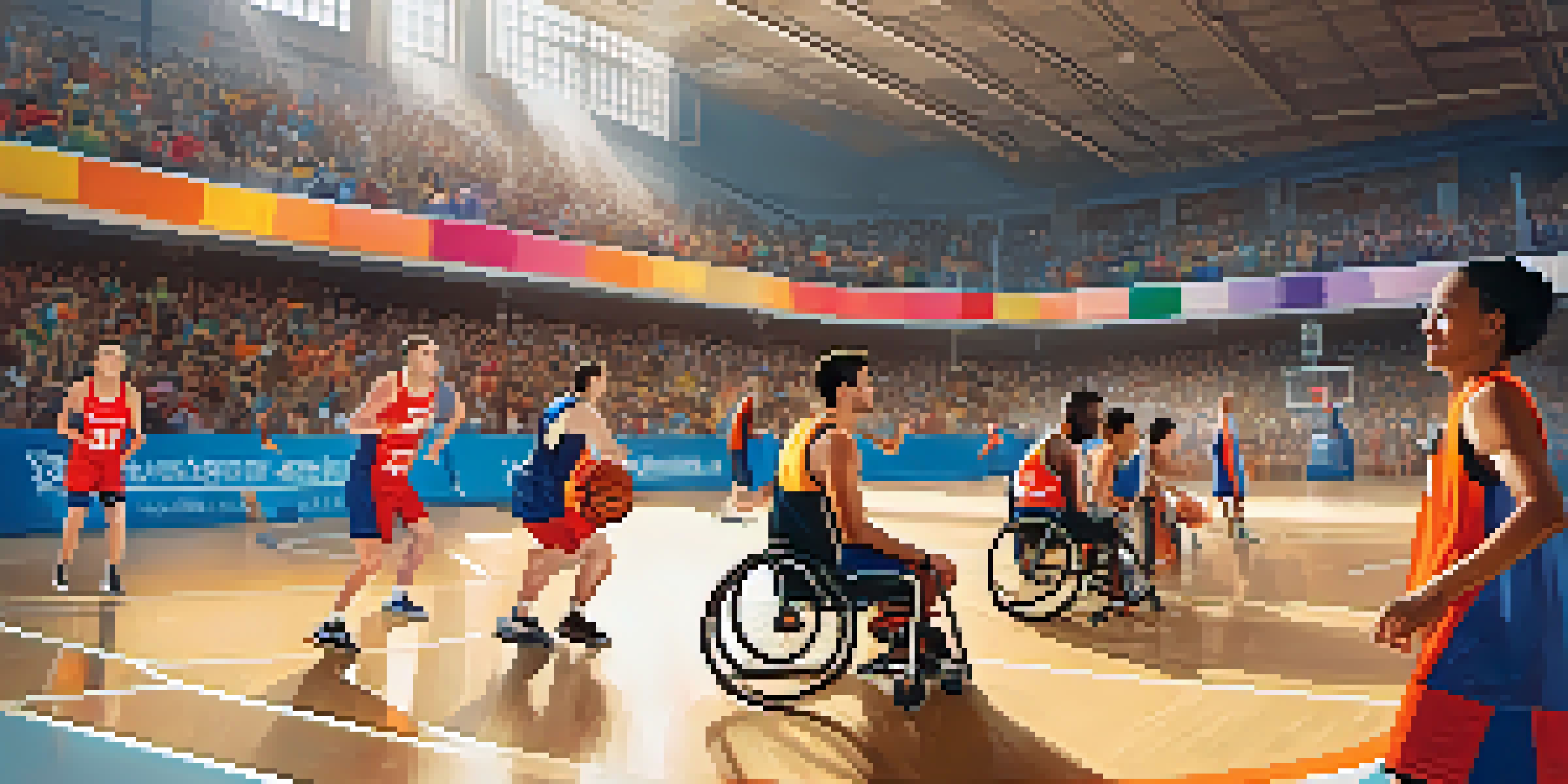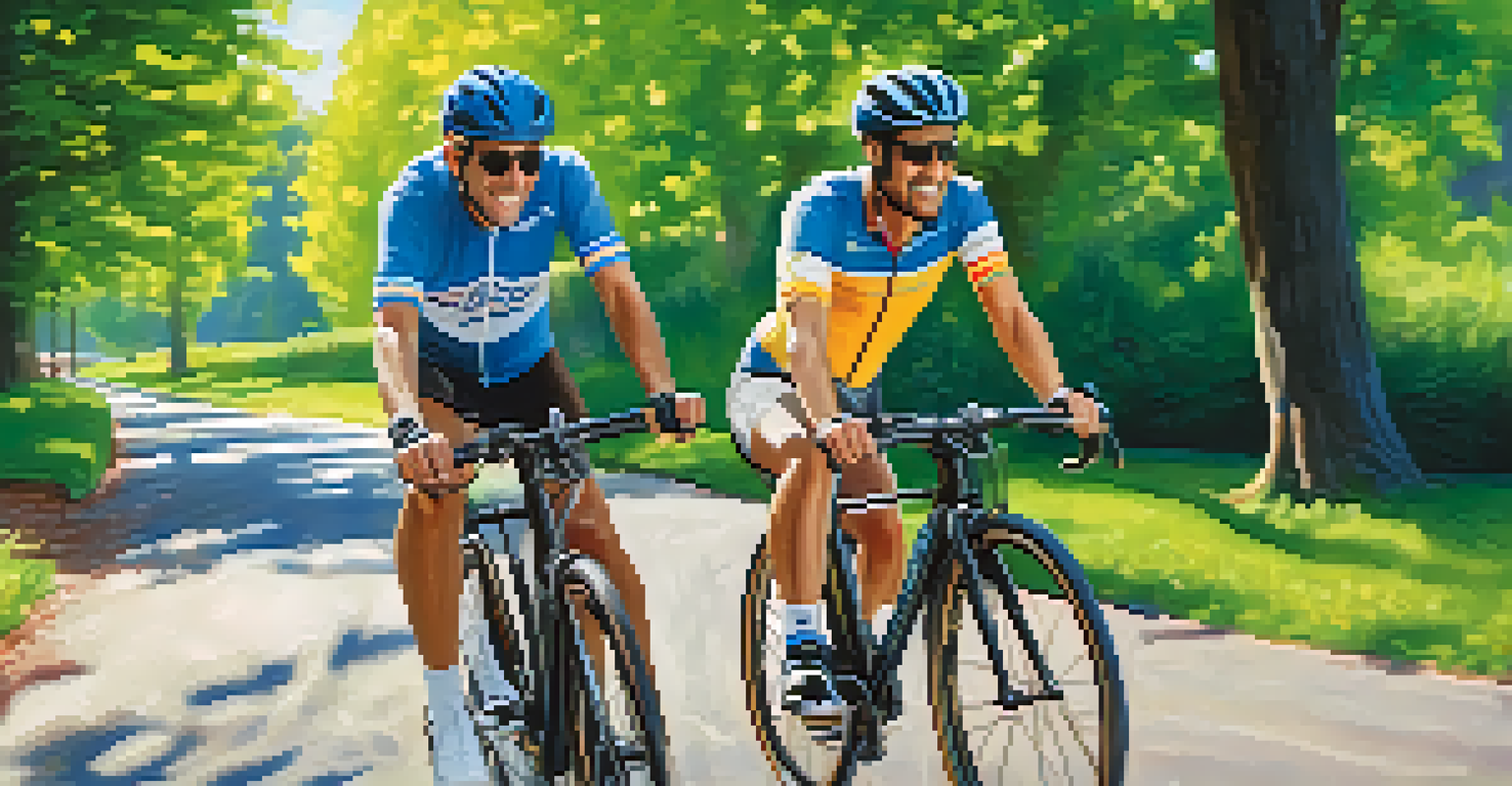Engaging Special Populations Through Adaptive Sports

Understanding Adaptive Sports and Their Importance
Adaptive sports are modified physical activities designed for individuals with disabilities, allowing them to participate fully. These sports not only encourage physical fitness but also foster a sense of community and belonging. For many participants, engaging in adaptive sports can lead to increased self-esteem and enhanced quality of life, making them a vital aspect of rehabilitation and personal growth.
The only disability in life is a bad attitude.
The importance of adaptive sports cannot be overstated, especially for special populations, which include individuals with physical disabilities, visual impairments, and developmental challenges. By providing tailored opportunities, adaptive sports create pathways for active participation and social interaction, helping to break down barriers. These activities often serve as a bridge to greater inclusivity in sports and recreation.
Moreover, adaptive sports programs are designed to be accessible and enjoyable for everyone involved. They not only focus on competition but also emphasize fun, teamwork, and personal achievement. This holistic approach ensures that individuals feel valued and motivated to push their limits, whether they are beginners or seasoned athletes.
Benefits of Adaptive Sports for Special Populations
Engaging in adaptive sports offers numerous benefits, both physical and psychological. Physically, these activities can improve strength, flexibility, and overall health, which is particularly crucial for individuals with disabilities. Psychologically, the sense of accomplishment that comes from mastering a new skill or participating in a team can significantly boost confidence and mental well-being.

Additionally, adaptive sports provide a unique opportunity for social interaction, helping to combat feelings of isolation that many individuals with disabilities may experience. Participating in a team or community sport can foster friendships, create lasting bonds, and provide a support system. These connections are invaluable, offering emotional support and camaraderie that enrich participants' lives.
Adaptive Sports Enhance Quality of Life
Engagement in adaptive sports boosts physical health and psychological well-being for individuals with disabilities.
Furthermore, adaptive sports can serve as a platform for advocacy and awareness. As more people witness the capabilities of athletes with disabilities, societal perceptions shift, leading to greater acceptance and inclusivity. This ripple effect can inspire changes in policies and practices, promoting accessibility across all areas of life.
Types of Adaptive Sports Available
There is a wide variety of adaptive sports available, catering to different interests and abilities. Some popular options include wheelchair basketball, adaptive rowing, and sitting volleyball, each designed to accommodate specific needs. For those with visual impairments, there are also sports like goalball and tandem cycling, which offer exciting competition while ensuring safety and accessibility.
Inclusion is not a privilege, it is a right. Everyone deserves the opportunity to participate in sports.
Moreover, many organizations are constantly innovating to create new adaptive sports or modify existing ones. For example, adaptive skiing and snowboarding have gained popularity, allowing individuals to experience the thrill of winter sports. With advancements in technology and equipment, the possibilities for adaptive sports continue to expand, making them more inclusive than ever.
It’s important for potential participants to explore different options to find the sport that resonates with them. Each sport not only promotes physical fitness but also encourages personal growth and social interaction, making the journey of finding the right fit both exciting and rewarding.
Barriers to Participation in Adaptive Sports
Despite the benefits, several barriers can hinder participation in adaptive sports. Accessibility issues, such as the availability of appropriate facilities and equipment, often pose significant challenges. Many individuals may not have access to adaptive sports programs in their communities, which can limit opportunities to engage in these activities.
Additionally, there can be a lack of awareness or understanding of adaptive sports among potential participants and their families. Misconceptions about disabilities and athletic capabilities may discourage individuals from trying new activities. Education and outreach efforts are essential to demystify adaptive sports and highlight the abilities of participants.
Barriers Limit Participation in Sports
Accessibility issues, misconceptions, and financial constraints can hinder individuals from engaging in adaptive sports.
Financial constraints can also play a role, as adaptive sports equipment and programs may come with additional costs. This can be a significant barrier for individuals from low-income backgrounds. Offering scholarships, grants, or community-funded programs can help alleviate these financial burdens and ensure that adaptive sports are accessible to all.
Role of Organizations in Promoting Adaptive Sports
Organizations dedicated to adaptive sports play a crucial role in promoting participation among special populations. These organizations often provide resources, training, and support to athletes, coaches, and families. By creating a structured environment, they help individuals feel more comfortable and confident in their abilities.
Many organizations also focus on advocacy and awareness, working to improve accessibility and inclusivity in sports. They often collaborate with local governments, schools, and community centers to promote adaptive sports programs. This collaboration is vital for creating a supportive infrastructure that encourages participation.
Moreover, these organizations frequently host events, competitions, and workshops to engage the community and raise awareness about the importance of adaptive sports. By showcasing the talent and determination of adaptive athletes, they inspire others to join in and support these initiatives, fostering a culture of inclusivity.
Creating an Inclusive Environment for Adaptive Sports
Creating an inclusive environment for adaptive sports is essential for encouraging participation. This involves ensuring that facilities are accessible and that staff are trained to support individuals with diverse needs. By fostering a welcoming atmosphere, organizations can help participants feel valued and respected.
In addition to physical accessibility, inclusivity also requires a shift in mindset. Promoting an understanding of the unique abilities of each individual can help break down stereotypes and foster a sense of belonging. Encouraging collaboration and teamwork among participants can also enhance the overall experience, making it enjoyable for everyone.
Organizations Foster Inclusivity
Dedicated organizations play a crucial role in promoting adaptive sports by providing resources, advocacy, and community support.
Moreover, including families and caregivers in the adaptive sports journey is crucial. By involving them in training sessions and events, organizations can create a supportive network that extends beyond the sports field. This holistic approach ensures that everyone involved feels empowered and engaged.
Future of Adaptive Sports and Special Populations
The future of adaptive sports looks promising, with increasing recognition of the importance of inclusivity in all areas of life. As technology continues to advance, we can expect to see more innovative equipment and adaptations that make sports accessible to even more individuals. This ongoing evolution will help cater to a wider range of abilities and interests.
Furthermore, there is a growing movement advocating for the inclusion of adaptive sports in schools and community programs. By introducing these activities at a young age, we can foster a culture of inclusivity that carries into adulthood. This not only benefits individuals with disabilities but enriches the entire community by promoting diversity and acceptance.

Ultimately, the future of adaptive sports relies on continued advocacy, education, and community support. By working together, we can create a world where everyone has the opportunity to participate in sports, regardless of their abilities, helping to empower special populations and enhance their quality of life.